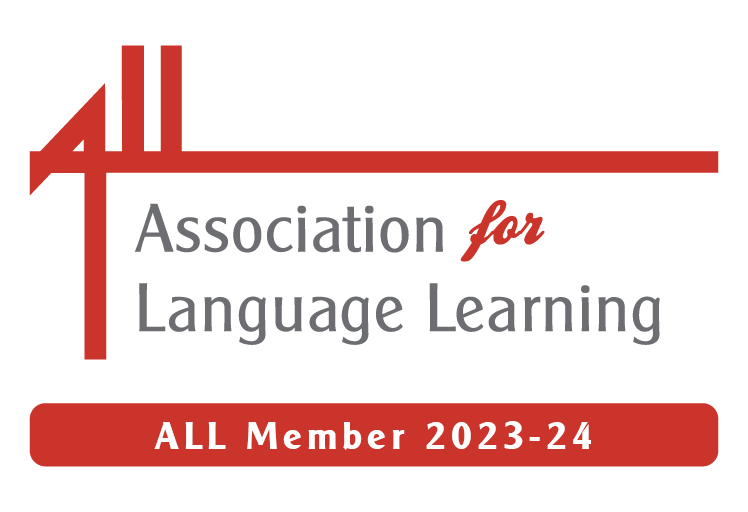¡Vámonos!
Miss the match last night? Here are the highlights, complete with commentary in Spanish, footage of the crowd in Vienna and in Madrid, and shots of the Royal Box.
The Language and Film Talent Awards (LAFTAs) is a competition for 13-21 year olds, run by CILT, the National Centre for Languages. Over the course of the competition, CILT asked young people to send in two-minute videos showing why languages are important.
CILT received over 160 entries from all across the UK, showing why we need languages: from being lost in a foreign country, to meeting the love of your life, to being attacked by sharks, cannibals or dragons…
The deadline for this year’s competition has now passed, but you still have the chance to get involved by joining in the ‘People’s Vote’, hosted by Multilingualvacancies.com. Vote on your favourite clips from the CILT shortlist and see how your favourites compare with the views of our celebrity judging panel, including Sir Trevor McDonald and comedian Eddie Izzard.
The winner of the ‘People’s Vote’ will receive a special prize sponsored by Multilingualvacancies.com at the LAFTAs awards ceremony, taking place in London in September 2008.
I’ve just popped over to the website to have a look at the 25 films that the celebrity panel shortlisted (that’s a short list!??) and cast my vote.
They include a HappyStreet disco (very familiar looking???), Barbie and Ken, some Geordie wide boys, a stuck lift, a spoof Mastercard advert and a Prime Minister showing his languages skills or lack of.
A couple of my favourites are below – the first, a rap, is very amusing although not sure it completely fits the brief.
Then there’s this one about False Friends. How many mistakes like this have I made! Not as good as the one someone on my degree course made on her year abroad when there were cockroaches in her kitchen , but that’s another story…
And finally, a couple of examples of animation using plasticine (as it’s my current preoccupation!)
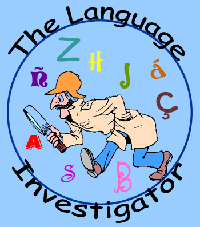
Today I had the pleasure of speaking at Coventry’s Primary Language Conference. After a morning at WCPS teaching Year 6 who were rewriting The Snack Song (more of that later in the week when I blog Unit23 of QCA Spanish SOW), I raced over to Coventry to deliver two sessions entitled Languages i my classroom. Sian James, the Primary Languages Strategy Consultant for Coventry had asked me to split each session into three sections – my top tips, some of my favourite games and then to teach something as I would in the classroom. Phew – lots to fit into an hour!
So, speaking in hyperdrive (what’s new? exactly!), I launched into a shorter version of the presentation I did at Tile Hill Wood last week (see my blog post for the notes) before highlighting some of favourite games – see below for notes.
I showed how to play some of the games as I endeavoured to teach Unit 11 of QCA SOW – El Carnaval de los animales in 20 minutes (it took 6-7hours with Yr4- and we might’ve done so much more!). La orquesta went down well as did my attempts to draw animals in Pictionary and the delegates also proved to be excellent lipreaders. (all resources can be downloaded from a previous blog post!)
The conference was really well attended and had a real buzz about it. Coventry is the home of the Language Investigators model of PLL, and the updated version will be launched in September. Sian has also been working on a brilliant resource called Living Languages, featuring six Coventry children whose first language is not English, celebrating languages, the children who speak them, and the similarities and differences we can see through their eyes. The official launch of this will be Sept 25th – more news nearer the time. Well done, Sian for a really successful day!
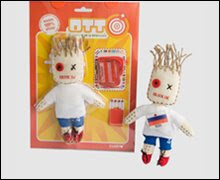
According to the Euro 08 blog, Spain have been reported to be using voodoo in their pursuit of that elusive championship win.
Originally reported in Russia Today (bit suspicious that, eh?),
Someone in Spain has been making and selling football player voodoo dolls, which come with a pack of flags. La Furia Roja fans can simply fix the flag of whoever Spain are playing onto the doll, and write a name and number on the back, then perform some amateur voodoo on whichever player they want.
The article seeks to give credence to this by citing the example of Luca toni who spent the quarter final inexplicably rolling around in pain, and suggests that..
.. if you see a certain Russian playmaker inexplicably holding his sides in agony or his legs doing things he clearly doesn’t intend tomorrow, you’ll know it’s due to an army of Spain fans poking a “10 Arshavin” doll with sharp sticks.
To be honest, I think the dolls are quite cute and remind me of Cobi, the Barcelona 1992 mascot. And if Spain win, well…..
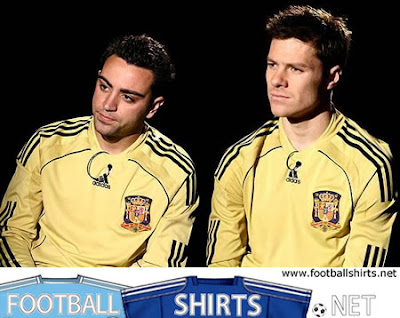
I’m finally sat in my lounge, clad in my Spain shirt with a glass of wine in hand watching the big match. When José Picardo enquired via Twitter ¿estás lista? whilst I was at music group practice, I tweeted in response that ‘La Furia Roja marcha adelante‘.
As José pointed out for me, tonight it’s La Furia Amarilla. Doesn’t sound as scary I’m afraid. And what’s more, I predicted that the best team would win – and they’d be wearing red when my mate Nick (who supports Russia) asked me yesterday.
Oh dear!
Let’s hope that’s the end of my woes for the night!
STOP PRESS – Xavi has just scored!!!!

On Monday, Comenius West Midlands held its Primary Languages Conference at the Novotel in Wolverhampton. Sandwiched between keynotes by Joe Brown from CILT that involved song rhyme and lots of action, and Steven Fawkes from ALL who thrilled us with his ‘Banane‘, delegates had to choose sessions from a range including :
- It’s magic!
- International Perspective
- Let’s play – Language games and activities for the playground.
- Numeracy through Languages
- Animation
- Italian for the Primary classroom – a cross curricular approach.
- Music and songs in the Primary classroom
- Animation in the languages classroom (double session)
- Creative use of ICT
A tricky choice for many, judging from the feedback at the end of the day! I for one will be emailing presenters for notes from their sessions as I was presenting and missed out on all of the sessions!
Actually, I didn’t completely miss out as I was able to attend the plenaries and also began the day by acting as ‘roadie’ for Oscar Stringer as he presented a whistle stop double session on animation from idea through planning, modelling, filming, adding finishing touches and publishing. Phew! In a very short time (less that two hours), the participants made short films in French and Spanish which can be viewed below and on his NING network. Just shows what you can do in a short time with good instruction, imagination and a bit of plasticine. ;o)
Find more videos like this on Animation For Education
Definitely inspired me! So much so that, after a quick chat with Oscar, I decided to have a go with my Year 4 class this week. More of that in a later post!
My session was entitled Creative use of ICT and centred on the use of some tools that i thnk are useful to enhance and enable PLL.
The idea had been to introduce delegates to Voki, Voicethread, Audacity and Photostory, explain how I’ve used them in my classroom, and then let delegates have a go at using one of the tools. I’d prepared notes for people that went into everyone’s pack so those who couldn’t attend were able to benefit too, and these pointed to online tutorials for the tools as well as examples from my experience and research. I’d also requested a laptop between two to be provided with a microphone and Internet access, and Audacity and Photostory3 uploaded ready. I’d prepared a Voicethread and Voki account for the day so all outcomes could be saved together for future reference, and I’d also added some examples to get people started.
Best laid plans and all! There were three laptops provided, the speakers didn’t work, and Internet access was at best infuriatingly slow and at worst non-existent (at 20€ per laptop, I hope the orgnisers got a refund!) Anyhow, it left me rather embarrassed as my examples took an age to load (Voki) or didn’t play sound (Voicethread AND Voki at times) – next tie I’ll save them for offline access using Camtasia or similar – and I’ve found that there is a facility on Voicethread now to save for offline access.
However, I did manage to highlight the use of del.icio.us which i hadn’t intended to mention but proved to be one of the most popular ideas with delegates. My account of how I use Audacity led to lots of smiles and there was a general hum of interest as I made a Photostory in three minutes.
I must say was a little disheartened by the first session, especially as I had to repeat it after lunch, but several people came up to me and seemed to be buzzing about something I’d shared, so I went into the repeat feeling a little more confident, especially as I was prepared for the problems this time! The make up of the group was different this time and they asked lots of questions – I think they were the G&T group ;o)
At the end of the afternoon when the evaluations were returned, I was rather surprised, and very pleased as well!- to read several who said things like
“Brilliant session on ICT – can you do a whole session on Voicethread and podcasting next time please?”
“the notes were so useful – I’m going to check them out on del.icio.us – and I’m going to tell my staff about it too”
If you want to have the notes, see below. and all the sites / references can be found on my del.icio.us account – http:del.icio.us/lisibo/june22
Creative uses of ICT in the PLL classroom – Get more College Essays
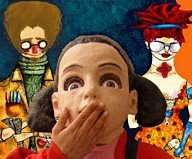
I was really excited to read a blog post on Talkabout Primary MFL entitled Theatre in Spanish for Primary children. Clare Secombe, who (amongst other things) is webmistress of the Sunderland MFL site, reported that there is a group called A Cuerpo based in Leicester who offer performances, workshops and resources in Spanish for children aged 6-11.
As Clare rightly points out, Spanish is often the poor cousin of French when it comes to such things so it’s great to hear the news. And looking at the A Cuerpo site, I’m even more excited! Here are a couple of extracts about the play they are currently touring – El Viaje de Matilde– check it out for yourself though.
A Cuerpo is thrilled to present El viaje de Matilde (Matilde’s Journey). El viaje de Matilde is a newly devised theatre performance in Spanish with an original script for children aged six to eleven, which offers the unique opportunity to learn Spanish whilst having fun.
El viaje de Matilde is an innovative theatre performance that uses an interaction of film with live theatre, as well as puppetry and music
Summary
The main character is a cheeky eight year-old Spanish girl called Matilde (a real size body puppet).
Matilde leads a normal life, she lives in a small town in Spain with her family, goes to school and has friends…but she is not completely happy, as she dreams of travelling to the jungle and having lots of adventures.
Luckily Matilde’s dad is an inventor and he is working on an instant travelling machine…
Well, Matilde can’t help herself and decides to build the machine herself…
As you can imagine things aren’t as easy as they look and Matilde gets into one or two tight spots…
They provide pre and post performance materials as well as the opportunity to ask questions of the actors; they also offer workshops. WOW!
I’m off to contact them now to find out when they can visit, especially as we’re supposed to be having a Language Focus Week next academic year!

I’ve mentioned EdTechRoundup on ¡Vámonos! before and have to say that I continue to be enlightened each Sunday night (when singing permits) by the chat about all things technological (and not so technological!) at the weekly Flashmeeting.
Therefore, I’m pleased to say that we’ve decided to share the conversations with others who cant attend or access the replay of the meeting, and today we’ve published the first of ‘ETR Weekly’ podcast in which we talk about starting out in the edublogosphere. You can listen to the podcast and see the show notes on the ETR blog – http://edtechroundup.com
.flickr-photo { border: solid 2px #000000; }.flickr-yourcomment { }.flickr-frame { text-align: left; padding: 3px; }.flickr-caption { font-size: 0.8em; margin-top: 0px; }
Whilst Spain were playing Italy this evening, an exciting thing happened to my Hit counter on ¡Vámonos! – it topped 6000!
As it reached 4000 in April – 26th April to be precise, that’s less than 2 months to amass another 2000 hits. I’m impressed!
In my 4000 hit post I said ‘Here’s to reaching 5000 by the end of the summer term’ – seems I need to aim higher!
Thank you so much to everyone for coming back – I’ll keep blogging as long as you keep reading :o)
¡Vámonos! ©2025. All Rights Reserved.
Powered by WordPress.
Theme by Phoenix Web Solutions





